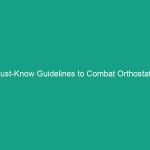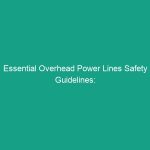1. Introduction
Good morning team,
Today, we’re going to talk about a critical aspect of Workplace Safety: overhead Hazards. Understanding and mitigating these Hazards is essential for ensuring everyone’s Safety on the job. Overhead hazards can lead to serious injuries and accidents, and it’s our responsibility to be aware and proactive in avoiding them.
Let’s dive into why this topic is so important and how you can contribute to a safer work Environment.
2. Understanding Overhead Hazards
Overhead hazards refer to any potential dangers that exist above workers, which can lead to falls, dropped objects, or other injuries. These hazards can arise from various sources, including tools, materials, and even structural components of the workplace.
It’s crucial to recognize that overhead hazards are not just theoretical; they can have real consequences on our daily operations. Common misconceptions include thinking that injuries from overhead hazards are rare or that they only occur in specific environments. In reality, these risks are present in many workplaces, including construction sites, warehouses, and manufacturing facilities.
3. Key Hazards, Risks, and Safety Considerations
Identifying the specific overhead hazards in your environment is the first step in mitigating risks. Here are some of the most common hazards:
- Falling Objects: Tools, equipment, or materials that can fall from heights pose a significant risk.
- Structural Hazards: Beams, pipes, or other structural elements that may not be secure can lead to accidents.
- Electrical Hazards: Overhead power lines and electrical installations can present shocking risks if not properly managed.
Ignoring safety protocols related to these hazards can lead to severe injuries, lost workdays, and even fatalities. It is essential to recognize the potential consequences of these risks and take appropriate action.
4. Best Practices, Procedures, & Actionable Advice
Now that we understand the potential overhead hazards, let’s discuss some Best Practices to avoid them:
Step-by-Step Safety Procedures
- Conduct Regular Inspections: Regularly check work areas for overhead hazards. This includes inspecting tools, materials, and the structural integrity of the workspace.
- Use Proper Personal Protective Equipment (PPE): Always wear hard hats and other protective gear when working in areas with overhead risks.
- Keep Work Areas Organized: Maintain a clean and organized workspace to minimize the risk of falling objects.
- Secure Tools and Materials: Use tool lanyards and secure materials properly to prevent them from falling.
- Implement Safety Barriers: Use barriers or warning signs to keep workers out of areas where overhead hazards are present.
Let’s look at a real-world incident that illustrates the importance of these practices:
In one case, a worker at a construction site was injured when a tool fell from a scaffold. The incident could have been avoided had proper safety procedures, such as securing tools and using barriers, been followed.
5. Regulations, Standards, and Compliance
Understanding and adhering to safety Regulations is crucial to ensure a safe working environment. Relevant Standards include:
- OSHA Regulations: The Occupational Safety and Health Administration outlines specific regulations regarding overhead hazards, including proper use of scaffolding and Fall Protection.
- ISO Standards: International Organization for Standardization provides guidelines on risk management and safety practices in the workplace.
Compliance with these regulations not only protects employees but also ensures that the organization avoids legal ramifications. Remember, safety is a shared responsibility, and we all play a part in maintaining a safe workplace.
6. Employee Engagement & Discussion
Now that we’ve covered the essentials, I’d like to open the floor for discussion. Consider the following questions:
- What overhead hazards have you encountered in your work area?
- Can you think of any additional safety practices we should implement?
- How can we improve our current safety procedures related to overhead hazards?
Your insights are invaluable, and discussing these topics can help us all stay safer on the job.
7. Conclusion & Key Takeaways
To summarize, understanding and mitigating overhead hazards is vital for ensuring Workplace Safety. Here are the key takeaways:
- Recognize the types of overhead hazards present in your environment.
- Follow Best Practices and safety procedures to minimize risks.
- Stay informed about regulations and compliance standards.
- Engage in open discussions about safety to foster a culture of safety.
Thank you for your attention and commitment to safety. Remember, prioritizing safety not only protects you but also your coworkers. Let’s work together to create a safer workplace!


